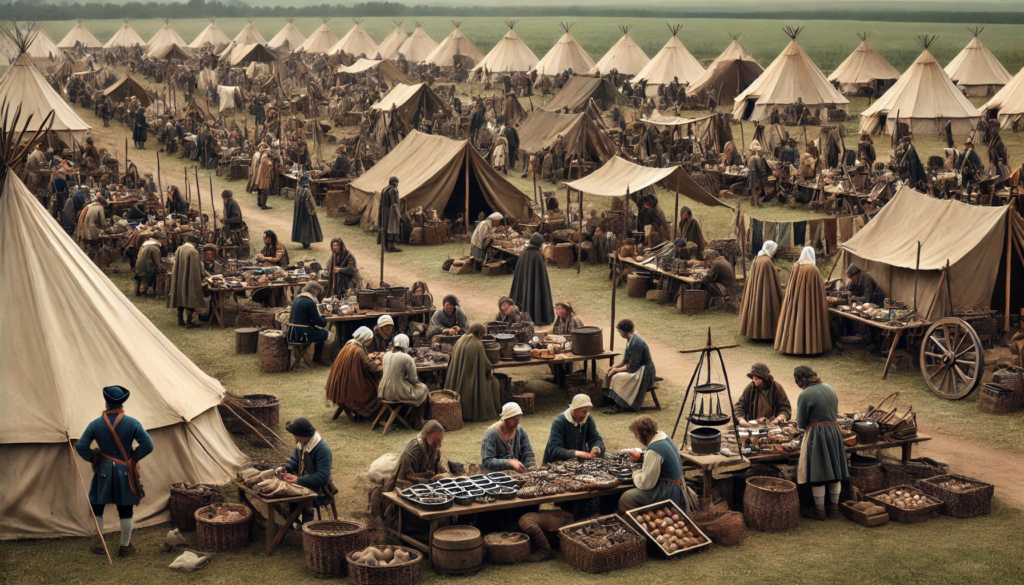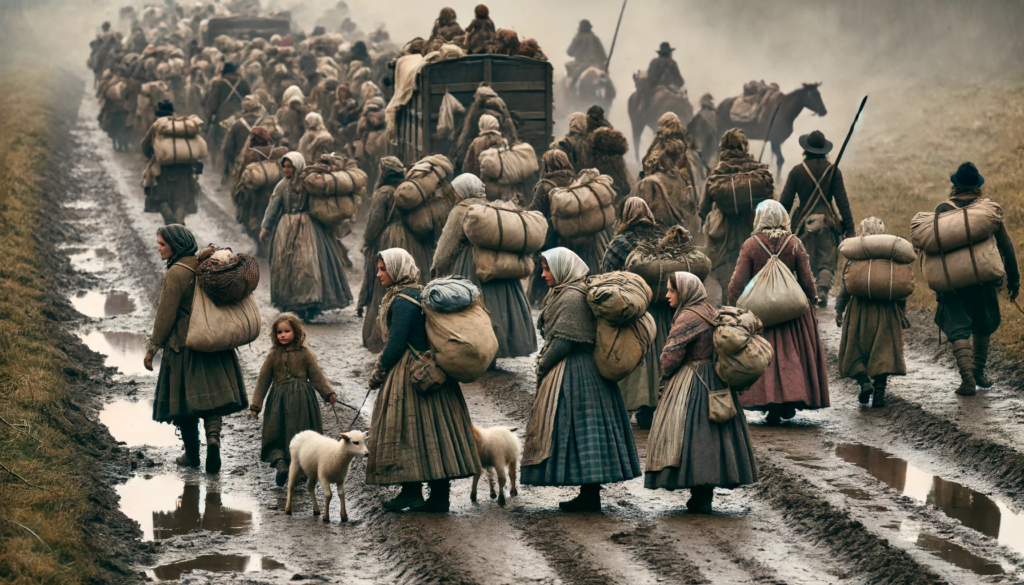In this series of Women and War, it is time to tell the tale of the ordinary women who followed the armies on campaign.
When we read about historical military campaigns, they exclusively focus on men. Women are possibly mentioned in passing; “Following the army was the baggage train, which included many women and children.” And that’s it.
What was the baggage train? Why did it include women and children? What were their living conditions like? We rarely find out. But here, I will try to tell their story.
The baggage train was the convoy of luggage and equipment needed to support the troops in the field. The army did not hire personnel to cook, repair equipment, or wash clothes. These tasks fell to those in the baggage train. Most of these tasks were considered women’s work, and therefore, the baggage train largely consisted of women.
An army, up until at least the 19th century, was like a mobile society. And just like in a society, different professions were needed. Even though those in the baggage train were not registered in muster rolls or personnel lists, they were as crucial as the soldiers for making the logistics of war work.
Despite this, they were not always welcome, and when they appear in sources, it is often in the form of complaints that the women “disrupted the morale” among the men.

The civilians who took part in the campaigns can be divided into three categories: the soldiers’ women, servants and service personnel.
The servants belonged to the officers, who could have a whole staff of them in the field. The service personnel, rarely employed by the army, consisted of various professions such as blacksmiths, coachmen, washer women and sutlers, who engaged in small-scale sales of various necessities such as alcohol or food.
But we will focus on the first category – the soldiers’ women. They can also be divided into two groups: soldiers’ wives and “loose women”. The loose women could be prostitutes or women who followed a man without being legally married. Both types are often referred to simply as “whores” in contemporary documents, and it was primarily their presence in the camps that the military leadership sought to combat.
The married women had a higher status and were considered to contribute to a better environment in the field, especially for their husbands. They can also be divided into two categories, the ordinary soldiers’ wives and the officers’ wives. The latter did not have to help with cooking, laundry and other chores. They had their own servants, and their task was mainly to maintain the social life in the field for the upper class with dinner parties and the like.

Life in the field was harsh for everyone. The women and children in the baggage train had to march just as far as the soldiers and often carried heavy burdens. The women could carry packs weighing 25 kilos on their backs, while also often carrying their children, leading livestock, and collecting firewood along the way to bring to the camp.
There are reports of heavily pregnant women who could go into labor in the middle of the march, and simply had to lie down in a ditch by the side of the road and give birth. Then they would just pick up the child and continue walking.
Many women also helped during battles. They carried ammunition and set up cannons, brought water, and searched for the wounded. They also participated in the looting of conquered cities. Additionally, the baggage train was at risk of being attacked by the enemy, and women and children could be taken as spoils of war.
Before we move on to examine how life in the field changed over the centuries, I will share the story about Lovisa von Burghausen, who became a prisoner of war when Russia captured Narva from Sweden in 1704.
Sources:
Larsdotter, Anna. Kvinnor i strid. (2016)
Sjöberg, Maria. Kvinnor i fält 1550 – 1850. (2008)

